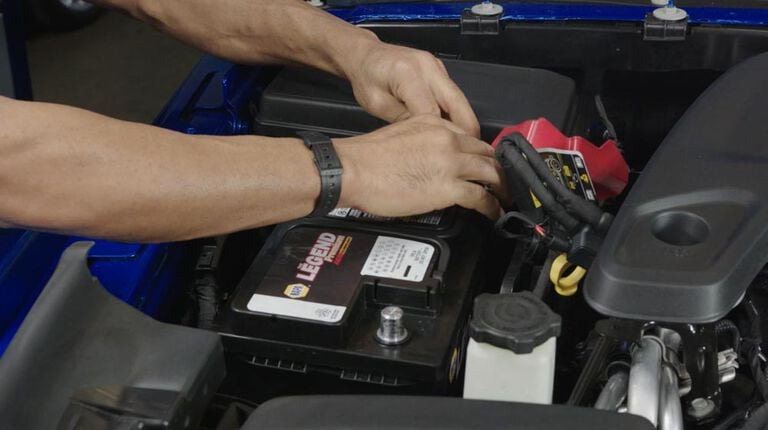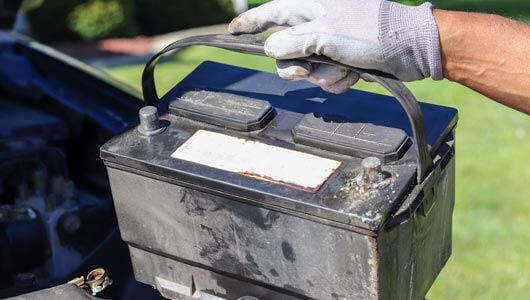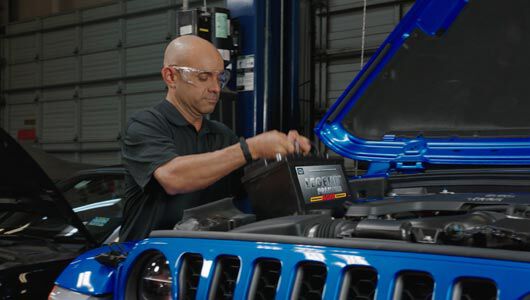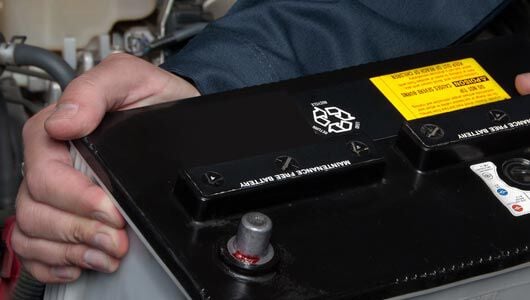6 Tips to help your car battery last longer

Your car battery provides the energy your vehicle needs to operate. Without one, you can’t start your vehicle, let alone drive it. While most car batteries have an expected lifespan of about three to five years, there are things you can do to ensure they reach those benchmarks.
How do car batteries work?
An automotive battery is an electrochemical storage device that converts chemical energy into electrical energy and comprises three basic components:
1. Electrodes that collect an electrical charge
2. Electrolyte solution that supplies water and sulfate for the electrochemical reaction to occur
3. Battery case to house these components
Most modern car batteries use a lead-acid design capable of providing a tremendous amount of on-demand current needed to perform several critical functions:
- Starting your vehicle
- Providing power to onboard electronic appliances (stereo, GPS, power windows etc.)
- Powering lights (headlights and interior lights)
Over time, your car battery performance will inevitably diminish. In Canada, in particular, many regions experience a combination of extreme cold in winter and extreme heat in summer. This has a significant negative effect on life expectancy.
To help you get the most from your battery, consider these helpful tips:
1. Start with a well-built car battery
When it comes to buying automotive batteries, cheaper isn’t usually the best option. While it might cost less up front, you could end up paying for it in other ways:
- Shorter life expectancy
- Poorer cold weather performance
- Limited battery warranty
2. Store your battery when not in use
In order for a car battery to retain a sufficient charge, your vehicle needs to operate somewhat frequently.
If your vehicle sits unused for extended periods, it’s a good idea to remove the battery and store it in a temperature-controlled environment.
It’s also a good idea to place it on a trickle charger from time to time. This will keep it topped up and ready for use.
3. Take care of your battery in temperature extremes
Some batteries also fare better when they’re not facing temperature extremes. If you can, invest in a battery that can handle Canada’s climate. The ideal operating temperature for car batteries is 26.7 C
Extreme heat
Before vehicles became increasingly compact under the hood, there used to be plenty of space for air to flow and help cool hard-working components, like the battery.
Today, however, that under the hood airflow space has been scaled back significantly, and most components have attractive-looking cowlings that cover them up, but don’t do the air flow any favours. That means on extremely hot days, where temperatures hover at or even exceed 30 C, your battery is literally ‘cooking.’
The operation of a battery relies on a chemical reaction, so temperature plays a big role in how it performs. Heat accelerates chemical activity, and it can also accelerate internal cell corrosion. If you live in an extremely hot city that faces above average temperatures all the time, that extreme heat can decrease the lifespan of your battery.
Remember that batteries are also working harder in the summer as they fuel our stereo and our AC, so we’re asking it do more—and get hotter—at the very time it needs to cool down and do less. So, try to park in the shade and give your vehicle a break when you can.
Extreme cold
At colder temperatures, the battery’s ability to provide sufficient power to start and run a vehicle is diminished. That’s why automotive batteries are rated in CCA (Cold-Cranking Amperage). This is the amount of current a battery can deliver for 30 seconds at -18 C without dropping to a specified cutoff voltage. Obviously, the higher the CCA, the better the battery will perform in adverse conditions.
A fully charged lead-acid battery can survive up to -50 C, but a battery with a low state of charge can freeze at -1 C. When the water in a battery freezes, it expands and can cause irreparable damage.
4. Keep your battery connections clean
Car batteries require a solid contact between the battery post and the terminals. This helps ensure a sufficient flow of electrical current from the battery to the vehicle’s electrical and ignition systems.
To ensure good connectivity, it’s a good idea to:
- Clean the terminals periodically with a wire brush
- Remove any built-up corrosion
- Replace any frayed or damaged cables
5. Remove and install batteries with care
If you need to remove your battery, do it carefully. Keep in mind that different batteries have different connection options.
For post-mounted terminals, once you loosen the nut, gently twist the terminal side to side as you lightly pull upward.
When reconnecting a battery, seat the terminal firmly down on the battery post, and then tighten the nut without overdoing it. To help prevent acid corrosion, apply an appropriate type of grease.
6. Get your battery checked
If you notice that your vehicle is sluggish when you go to start it, or you’re having other electrical issues, it’s a good idea to get your battery tested. In some cases, it might not be the battery that’s at fault. A trained automotive technician will help isolate the problem.








